Kyphosis Treatment Options: Nonsurgical vs. Surgical
Explore the pros and cons of nonsurgical and surgical methods for managing kyphosis, and learn how to maintain spinal health
Kyphosis in Adolescents: Causes, Symptoms, and Treatment Options
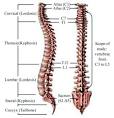
Kyphosis is a spinal condition that causes an excessive forward curvature of the spine, leading to a hunched or rounded appearance of the back. While kyphosis can affect people of all ages, it is most common in adolescents, especially teenage girls.
The main causes of kyphosis in adolescents include poor posture, abnormal growth of the spinal bones, and Scheuermann's disease, a condition that affects the normal growth of the bones in the spine.
The symptoms of kyphosis in adolescents may include:
- Visible rounding of the upper back
- Muscle stiffness or tightness in the back
- Mild to severe back pain
- Fatigue or discomfort after standing or sitting for long periods of time
The treatment options for kyphosis in adolescents depend on the severity of the condition and the underlying cause. Nonsurgical treatments may include physical therapy, specific exercises to improve posture and strengthen the spine, and the use of a brace to help correct the curvature of the spine. In severe cases, spinal fusion surgery may be necessary to correct the curvature and stabilize the spine.
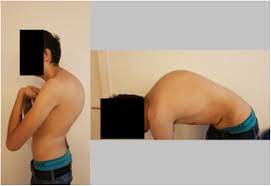
Physical Therapy for Kyphosis: Exercises to Improve Posture and Strengthen Spine
Physical therapy is an effective nonsurgical treatment for kyphosis that can help reduce pain, improve flexibility, and strengthen muscles in the back and core. Physical therapists use a variety of techniques and exercises to help patients improve their posture, increase range of motion, and prevent further spinal deformity.
Some common physical therapy exercises for kyphosis may include:
- Thoracic extension exercises to help stretch and strengthen the muscles in the upper back
- Core strengthening exercises to improve overall strength and stability
- Posture correction exercises to help patients maintain proper spinal alignment
- Mobility exercises to improve range of motion in the spine and surrounding muscles
Physical therapy can also help patients learn how to modify their daily activities to reduce pain and improve spinal health.
Spinal Fusion Surgery for Kyphosis: Procedure, Recovery, and Potential Side Effects
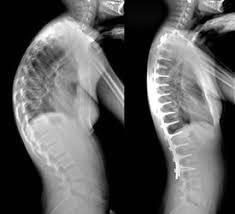
Spinal fusion surgery is a surgical treatment option for kyphosis that is used in more severe cases where nonsurgical treatments have been unsuccessful. The procedure involves fusing two or more vertebrae together to stabilize the spine and reduce the curvature.
The recovery time for spinal fusion surgery can vary depending on the individual case and the extent of the surgery. Patients may need to wear a brace for several weeks or months after the surgery to support the healing process and prevent further movement in the spine.
Some potential side effects of spinal fusion surgery may include:
- Pain or discomfort at the surgical site
- Infection at the surgical site
- Difficulty moving or bending the spine
- Spinal cord or nerve injury
Prior to undergoing spinal fusion surgery, it is important to discuss the potential risks and benefits with a qualified healthcare professional.
How to Prevent Kyphosis: Tips for Maintaining Spinal Health
While some types of kyphosis cannot be prevented, there are several steps that individuals can take to help maintain spinal health and reduce the risk of developing spinal deformities. Some tips for preventing kyphosis include:
- Maintaining proper posture when sitting and standing
- Avoiding sitting or standing for long periods of time without taking breaks
- Wearing comfortable, supportive footwear
- Regularly performing exercises that strengthen the back and core muscles
- Eating a balanced diet that includes calcium and vitamin D to promote strong bones
- Avoiding smoking, which can weaken bones and increase the risk of osteoporosis
- Regularly visiting a healthcare professional for checkups and bone density tests
What Is Postural Kyphosis? Understanding the Most Common Type of Kyphosis
Postural kyphosis is the most common type of kyphosis and is often caused by poor posture habits. Postural kyphosis may lead to rounded shoulders and a forward head posture. While postural kyphosis is typically not a severe condition, it can cause discomfort and affect spinal alignment over time.

Scheuermann's Kyphosis: Causes, Symptoms, and Treatment Options
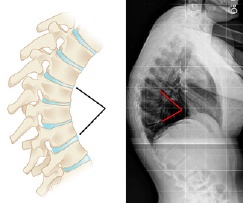
Scheuermann's kyphosis is a spinal condition that typically affects adolescents and is caused by abnormal growth of the spinal bones. Scheuermann's kyphosis can cause a significant forward curvature of the upper back and may lead to pain and discomfort.
The treatment options for Scheuermann's kyphosis may include physical therapy, exercises to strengthen the back and core muscles, and the use of a brace to help correct the spinal curvature. In severe cases, spinal fusion surgery may be necessary to stabilize the spine and reduce the curvature.
Congenital Kyphosis: Signs, Symptoms, and When Surgery Is Needed
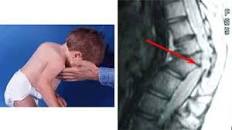
Congenital kyphosis is a rare spinal condition that is present at birth. Congenital kyphosis may be caused by abnormal spinal development or spinal cord abnormalities, and can cause a significant forward curvature of the spine.
The signs and symptoms of congenital kyphosis may include:
- Visible rounding of the upper back or hunchback appearance
- Difficulty breathing or shortness of breath
- Severe back pain or discomfort
- Weakness or numbness in the arms or legs
In severe cases of congenital kyphosis, surgery may be necessary to correct the curvature of the spine and prevent further spinal deformity. The extent of the surgery will depend on the individual case and the severity of the condition.
How to Improve Posture and Prevent Spinal Deformity in Children and Teens
Children and teens can take several steps to improve their posture and reduce the risk of developing spinal deformities such as kyphosis:
- Maintaining proper posture when sitting and standing
- Using ergonomic school supplies and backpacks
- Avoiding carrying heavy bags or backpacks on one shoulder
- Regularly performing exercises that strengthen the back and core muscles
- Eating a balanced diet that includes calcium and vitamin D to promote strong bones
It is important for parents and caregivers to encourage healthy posture habits in children and teens from an early age.
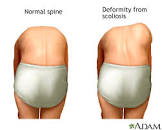
In some cases, healthcare professionals may perform Adam's forward bend test to check for signs of spinal deformity in children and teens.
Living with Kyphosis: Managing Pain, Fatigue, and Other Symptoms
Living with kyphosis can be challenging, especially if the condition causes pain, discomfort, or fatigue. However, there are several strategies that individuals with kyphosis can use to manage their symptoms and improve their quality of life. Some tips for living with kyphosis may include:
- Practicing good posture habits
- Regularly performing exercises that strengthen the back and core muscles
- Using a supportive brace or cushion to relieve pressure on the spine
- Taking regular breaks and avoiding standing or sitting for long periods of time
- Getting enough rest and sleep to help manage fatigue
- Engaging in stress-reducing activities such as yoga or meditation
- Working with a healthcare professional to develop a comprehensive treatment plan
Kyphosis and Breathing Difficulties: Understanding the Connection and How to Manage
Kyphosis can sometimes cause breathing difficulties, especially if the curvature of the spine puts pressure on the lungs or chest cavity. Some common symptoms of breathing difficulties associated with kyphosis may include:
- Shortness of breath
- Chest pain or tightness
- Difficulty taking deep breaths
- A persistent cough
In some cases, healthcare professionals may recommend pulmonary function tests or other diagnostic tests to assess the degree of breathing difficulty and develop an appropriate management plan.
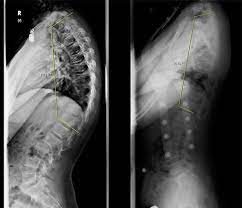
Treatment options for breathing difficulties associated with kyphosis may include the use of a brace to support the spine and improve posture, physical therapy to strengthen the muscles involved in breathing, or surgery to correct the curvature of the spine. In some cases, healthcare professionals may also recommend medication to help manage breathing difficulties.

